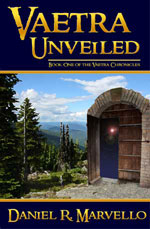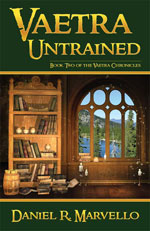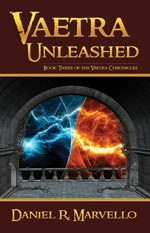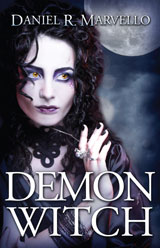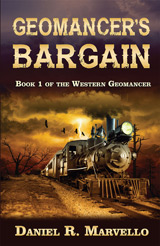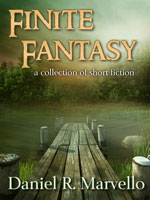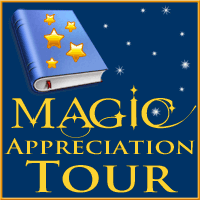Last week I posted that I was going to try a story architecture method called The Snowflake Method. This technique is the brainchild of writing instructor and author Randy Ingermanson. He offers a free article on his web site that explains how it works. I could immediately see how it would help me move forward with my book, so I thought I’d give it a shot.
So far, I’ve enjoyed the process.
The theory behind The Snowflake Method is that you design your story from the top down. You start with a broad view of the story and then fill in more details as you drill down into it.
The snowflake analogy comes from a fractal demonstration that shows a simple triangle being transformed step-by-step into a complex snowflake image. Each step adds more lines to the image, so it goes from a triangle, to a star, and on to additional shapes that eventually resemble a snowflake. The demo is cool — check it out.
The One Sentence Summary
Using Randy’s Snowflake Method, you start with a one-sentence summary of the novel. When someone asks you what your story is about, this sentence is your reply.
Randy recommends that you use the NYT Bestsellers list for inspiration. I did that, and here are some of the examples I found:
- WATER FOR ELEPHANTS, by Sara Gruen: Distraught after the death of his parents, a young veterinary student helps save a Depression-era circus.
- PRIVATE, by James Patterson and Maxine Paetro: Jack Morgan, a former Marine and the head of an investigative firm, pursues the murderer of his best friend’s wife.
- THE GIRL WITH THE DRAGON TATTOO, by Stieg Larsson: A hacker and a journalist investigate the disappearance of a Swedish heiress; the first volume in the Millennium trilogy.
- THE ART OF RACING IN THE RAIN, by Garth Stein: An insightful Lab-terrier mix helps his owner, a struggling race car driver.
The basic scheme here is “somebody does something.”
The “somebody” part should describe the main character (e.g. young veterinary student, former Marine and head of an investigative firm, hacker, journalist, insightful Lab-terrier mix).
The “does something” part should describe the story (e.g. help save a Depression-era circus, pursue the murderer of his best friend’s wife, investigate the disappearance of a Swedish heiress, help his owner).
I worked through many variations of a one sentence summary, and came up with this:
A mercenary soldier reluctantly helps sorcerers stop the spread of a dangerous cult.
Here are some of the things I was hoping the summary sentence would accomplish:
- Identify the story as being in the Swords and Sorcery genre (“sorcerers”)
- Describe the main character (“mercenary soldier”)
- Describe the overall story (“stop the spread of a dangerous cult”)
- Hint at the primary conflict in the story (“reluctantly helps”)
The summary sentence will undoubtedly change over time as I develop more story details.
The One Paragraph Blurb
The second step in the Snowflake Method is to write a paragraph summary of your novel. This paragraph is supposed to describe “the story setup, major disasters, and ending of the novel.” You would potentially use this paragraph in your back cover copy (or in a book proposal).
Randy designs his stories as “three disasters plus an ending.” He suggests you consider using the classic Three-Act structure as a framework. Your blurb then has five sentences: One for the story background, one for each disaster, and one for the ending.
I’m new at this, so I’m perfectly happy to stand on the foundation of experienced writers who’ve gone before me. I decided that the Three-Act framework makes as much sense as anything else, and three disasters plus an ending is close to what I was already planning. So far, so good.
The one concern I have with writing the blurb as Randy suggests is that I don’t want my blurb to be, in effect, a spoiler. How much do you tell about the ending without giving away too much?
This is another situation where looking at the back cover of other fiction books would probably give me some good ideas. But for the moment, I forged ahead and worked out the following:
Mercenary soldier and renowned “problem solver” Jaylan Forester follows a secretive sorceress named Sulana on a mission to retrieve a stolen item, and discovers something about himself that threatens his way of life. Returning to a normal existence proves impossible for Jaylan as events force him into exploring his newfound abilities. When Jaylan is captured by a wicked sorcerer with sinister plans, only Sulana can free him from an evil enchantment and help him find the answers about his future.
There’s a lot of weak language in this blurb, but it’s a start. I’ll go back to it and tighten it up after I develop more of the story and take a look at what’s been done for other books.
Character Summaries
The third step in the Snowflake Method is to write up character summaries. The idea is to establish the storyline for each major character in your novel.
You start with the character’s name and give that character a one sentence story summary as well as a one paragraph summary, similar to what you did for the novel itself. To develop the summaries, you write down the character’s motivation, goal, conflict, and epiphany.
I’m still working on this part. I have six summaries written up so far, and I have a few more to go.
I’m already finding that this step is giving my characters an incredible amount of dimension. Knowing a character’s motivations and goals gives them personality, and thinking about their conflicts and their epiphany establishes their role in the story. Very cool.
Taking Shape
So far, I’m having a great time using the Snowflake Method. It is just what I needed at this point in my writing to get “the big picture” on my story.
I think the best thing about it is that you can change your mind about how something needs to work and modify just a few paragraphs of overview, rather than having to rewrite entire scenes in your book. It is like creating a blueprint for a house before you start building so you can anticipate and correct problems without having to tear down and rebuild part of the actual structure (which almost never works out well).

